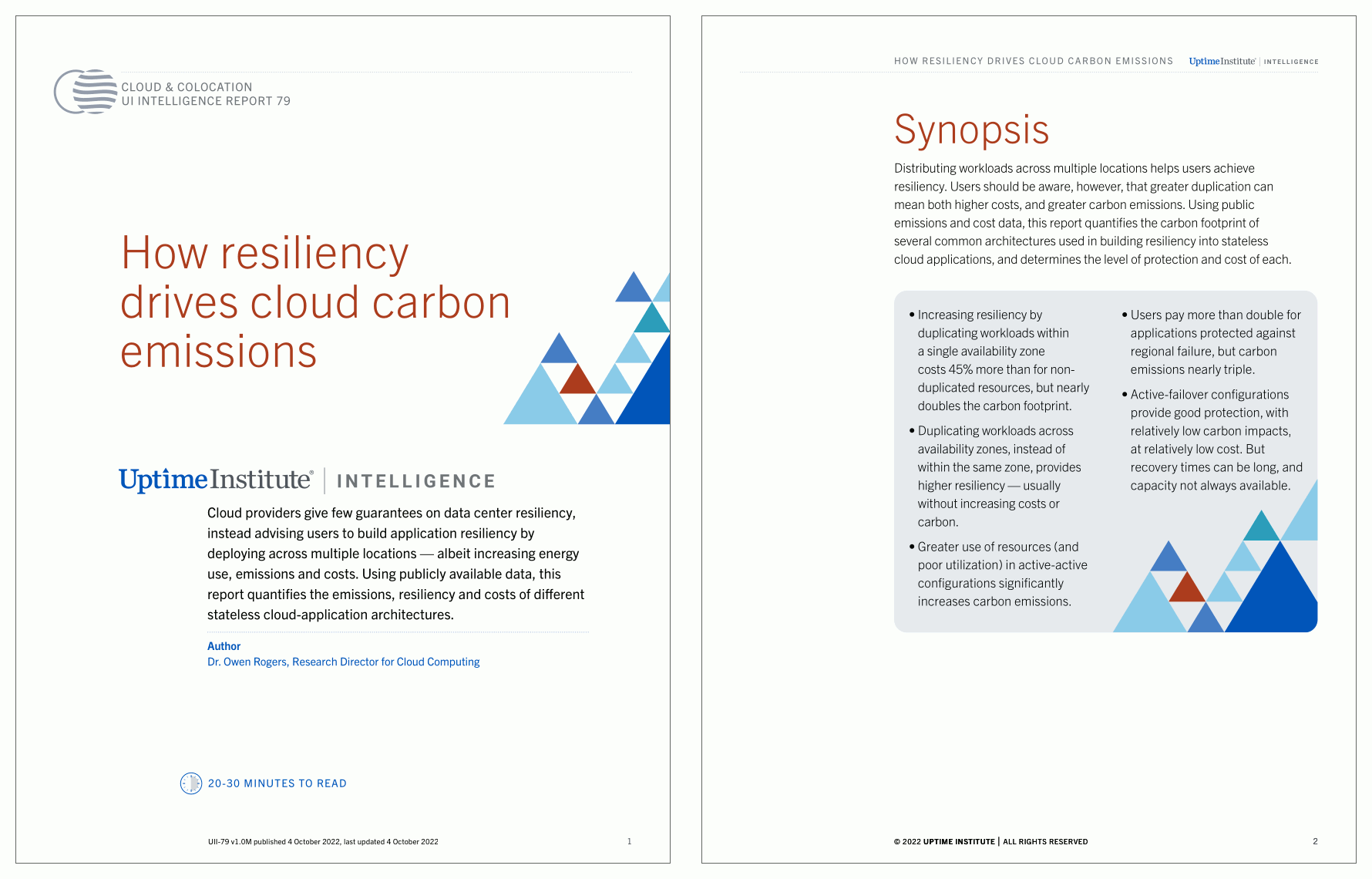How Resiliency Drives Cloud Carbon Emissions
Distributing workloads across multiple locations helps users achieve resiliency. Users should be aware, however, that greater duplication can mean both higher costs, and greater carbon emissions. Using public emissions and cost data, this report quantifies the carbon footprint of several common architectures used in building resiliency into stateless cloud applications, and determines the level of protection and cost of each.
Key findings:
- Increasing resiliency by duplicating workloads within a single availability zone costs 45% more than for nonduplicated resources, but nearly doubles the carbon footprint.
- Duplicating workloads across availability zones, instead of within the same zone, provides higher resiliency — usually without increasing costs or carbon.
- Greater use of resources (and poor utilization) in active-active configurations significantly increases carbon emissions.
- Users pay more than double for applications protected against regional failure, but carbon emissions nearly triple.
- Active-failover configurations provide good protection, with relatively low carbon impacts, at relatively low cost. But recovery times can be long, and capacity not always available.
Report Authors:
- Dr. Owen Rogers, Research Director for Cloud Computing, Uptime Institute
Download the Report
MORE ABOUT UPTIME INTELLIGENCE
Uptime Intelligence is the leading source of research, insight and data driven analysis focused on digital infrastructure.
This report is just one example of over 600 reports and resources available to Uptime Intelligence customers
If you would like to access the full library of reports and resources, you can request a free 4-week evaluation of Uptime Intelligence using the link below.

